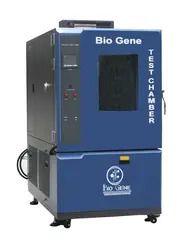In the realm of industrial testing and quality assurance, reach-in altitude test chambers play a critical role. These specialized chambers are designed to simulate high-altitude conditions to test the performance and reliability of various products and components.
What is a Reach-In Altitude Test Chamber?
A reach-in altitude test chamber is a controlled environment chamber used to replicate the low-pressure conditions experienced at high altitudes. These chambers are equipped to create an environment where atmospheric pressure, temperature, and humidity can be precisely controlled. The primary goal is to assess how products perform under simulated high-altitude conditions, which can be crucial for ensuring their reliability and safety in real-world applications.
VISIT ALSO:- Optimizing Efficiency with Combo Chiller-Freezer Units: A Comprehensive Guide
How Does a Reach-In Altitude Test Chamber Work?
The chamber operates by reducing the atmospheric pressure inside to mimic the conditions found at high altitudes. This is achieved through the use of a vacuum system that can lower the pressure inside the chamber to levels equivalent to those found at various altitudes. The chamber may also include temperature and humidity controls to further simulate the environmental conditions that products may face.
Key components of a reach-in altitude test chamber include:
- Vacuum System: To create low-pressure conditions.
- Temperature Control System: To regulate temperature within the chamber.
- Humidity Control System: To manage humidity levels.
- Instrumentation and Controls: For precise monitoring and adjustment of chamber conditions.
Applications of Reach-In Altitude Test Chambers
Reach-in altitude test chambers are used across various industries, including:
- Aerospace: To test aircraft components and systems for performance and reliability at high altitudes.
- Automotive: For evaluating automotive parts and systems under simulated high-altitude conditions.
- Electronics: To ensure electronic devices and components function correctly at reduced atmospheric pressure.
- Medical Devices: To verify that medical equipment operates effectively in low-pressure environments.
- Consumer Goods: To assess the durability and performance of consumer products in extreme conditions.
Benefits of Using Reach-In Altitude Test Chambers
- Reliability Testing: Ensures that products and components will function as intended in high-altitude environments.
- Compliance with Standards: Helps manufacturers meet industry standards and regulatory requirements for high-altitude performance.
- Product Improvement: Identifies potential weaknesses or design flaws in products that may not be evident under normal conditions.
- Safety Assurance: Provides confidence that products will perform safely and effectively in real-world conditions.
Considerations When Choosing a Reach-In Altitude Test Chamber
- Capacity and Size: Ensure the chamber is appropriately sized for the products or components being tested.
- Temperature and Pressure Range: Verify that the chamber can achieve and maintain the required temperature and pressure ranges for your specific testing needs.
- Control and Monitoring: Look for advanced control systems and monitoring capabilities to ensure accurate and reliable testing.
- Maintenance and Support: Consider the availability of maintenance services and technical support to keep the chamber in optimal condition.
- Certification and Compliance: Check that the chamber meets relevant industry standards and certifications for accuracy and safety.
VISIT ALSO:- Optimizing Environmental Conditions: An In-Depth Guide to Fly Growth Chambers
Conclusion
Reach-in altitude test chambers are invaluable tools for testing and ensuring the performance and reliability of products in high-altitude conditions. By simulating these extreme environments, manufacturers can identify potential issues and make necessary adjustments to improve product quality and safety. When selecting a reach-in altitude test chamber, it’s essential to consider factors such as capacity, temperature and pressure ranges, and control systems to ensure it meets your specific testing requirements.
